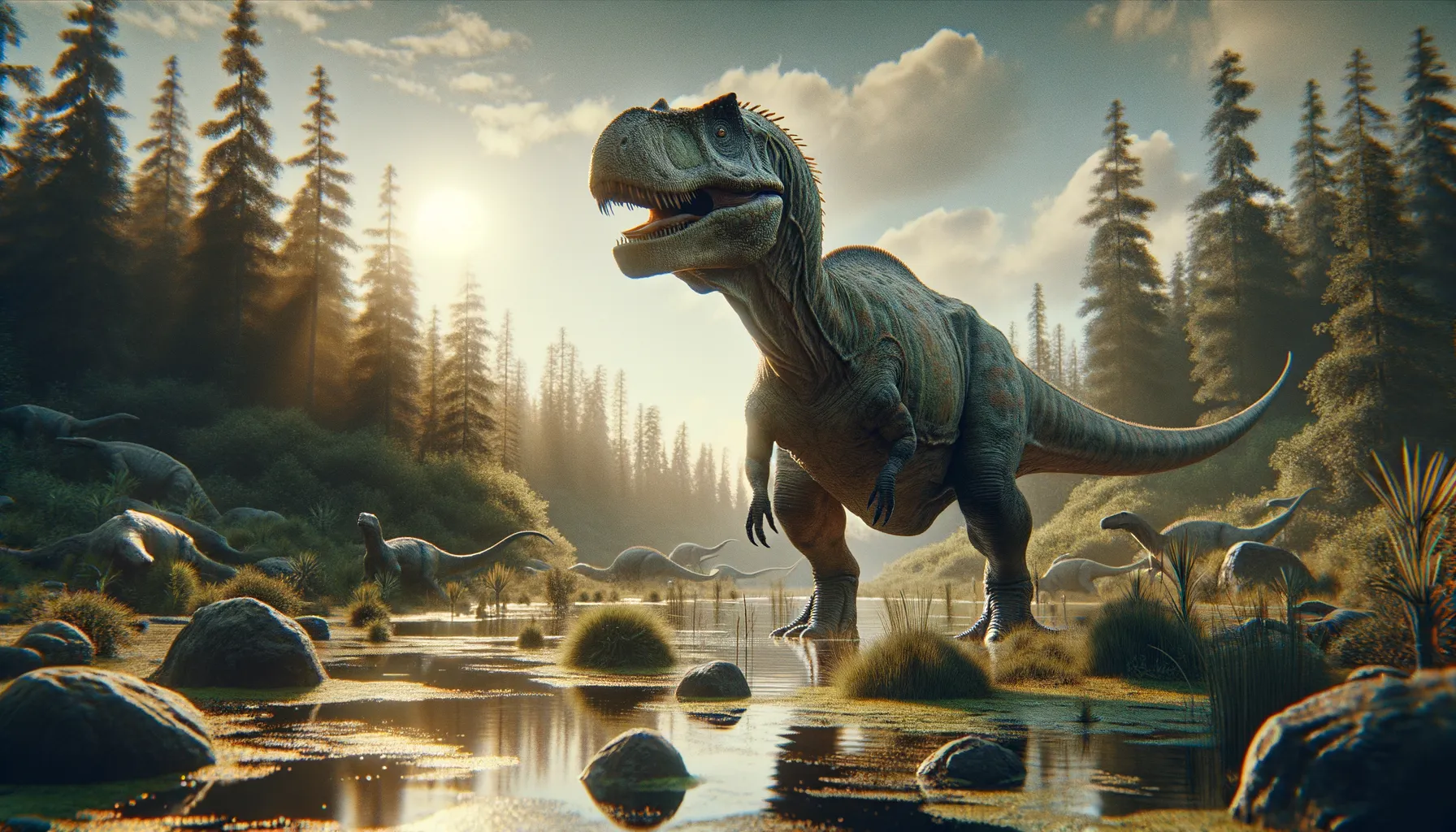
Albisaurus
Ancient enigma of the Cretaceous world.
Period
Cretaceous
Length
Estimated at about 3 to 4 meters long.
Height
Roughly 1 meter at the hips.
Weight
Estimated to weigh around 100 to 200 kg.
Albisaurus is a little-known dinosaur that lived during the late Cretaceous period. Due to sparse fossil evidence, much about its lifestyle and specifics remains speculative. It was an herbivorous dinosaur that roamed the land, possibly in small groups, and may have faced competition from other herbivores. The limited remains discovered in Europe provide a glimpse into the diverse dinosaur ecosystems of the time.
Diet
Albisaurus was likely herbivorous, feeding on the lush vegetation that was abundant during its time. Its diet would have consisted of leaves, ferns, and possibly fruits found in its prehistoric environment.
Hunting
Being an herbivore, Albisaurus did not hunt for food. It likely foraged for plant material, using its physical traits to reach various types of vegetation at ground level.
Environmental challenges
During the Cretaceous, Albisaurus would have encountered fluctuating climates which influenced the available plant resources. It also had to navigate a landscape populated by predators, requiring effective ways to avoid being preyed upon. Competition with other herbivorous species in its habitat could also present a challenge for food sources.
Speed
Its speed is not precisely known due to limited evidence.
Lifespan
Unknown due to insufficient fossil information.
First discovery
First discovered in the late 19th century in the Czech Republic.
Fun Facts
- Albisaurus is a little-known dinosaur, with very few fossils having been discovered.
- The name Albisaurus means 'Albis lizard' and it hails from the Czech Republic.
- Albisaurus lived during the Late Cretaceous period, around 95 million years ago.
- Fossils of Albisaurus were first discovered in the 19th century, making it an intriguing historical find.
- Given the limited fossils, scientists often speculate about its size and appearance.
- Albisaurus is believed to have been a plant-eating dinosaur, roaming ancient forested areas.
- Research on Albisaurus continues to evolve as paleontologists discover new clues about its existence.
Growth and Development
Little is known about Albisaurus’s growth and development due to incomplete fossil records. However, like many dinosaurs, it likely went through a series of growth stages from hatchling through adulthood, adapting its feeding habits as it matured. Juvenile Albisaurus may have remained in protected areas until they grew strong enough to roam more freely.
Habitat
The known fossils suggest it lived in ancient European ecosystems, possibly favoring floodplains and forested regions rich in vegetation. These areas would offer abundant food supply and some protection against predators. It would have coexisted with other species, both herbivorous and carnivorous.
Interaction with other species
Albisaurus likely cohabited with a variety of other dinosaurs, sharing its environment with both allied and predatory animals. Social interactions within its species may have been dictated by food availability and the need for defense against carnivores.
Natural lifespan
Due to sparse fossil evidence, its lifespan remains speculative.
Reproduction
Like other dinosaurs, Albisaurus would have reproduced by laying eggs. Breeding likely involved specific mating seasons, with nests being built in secluded areas to protect the vulnerable eggs from predators.
Social behaviour
It is presumed that Albisaurus might have exhibited some level of social behavior, possibly traveling in groups to increase their chances of survival. Grouping behaviors would provide safety in numbers against predators, as well as cooperative foraging for food.
Fossil locations
Fossil remains of Albisaurus have been found primarily in the Czech Republic. Limited fossil evidence makes it challenging to determine the full extent of its range or frequent habitats.
